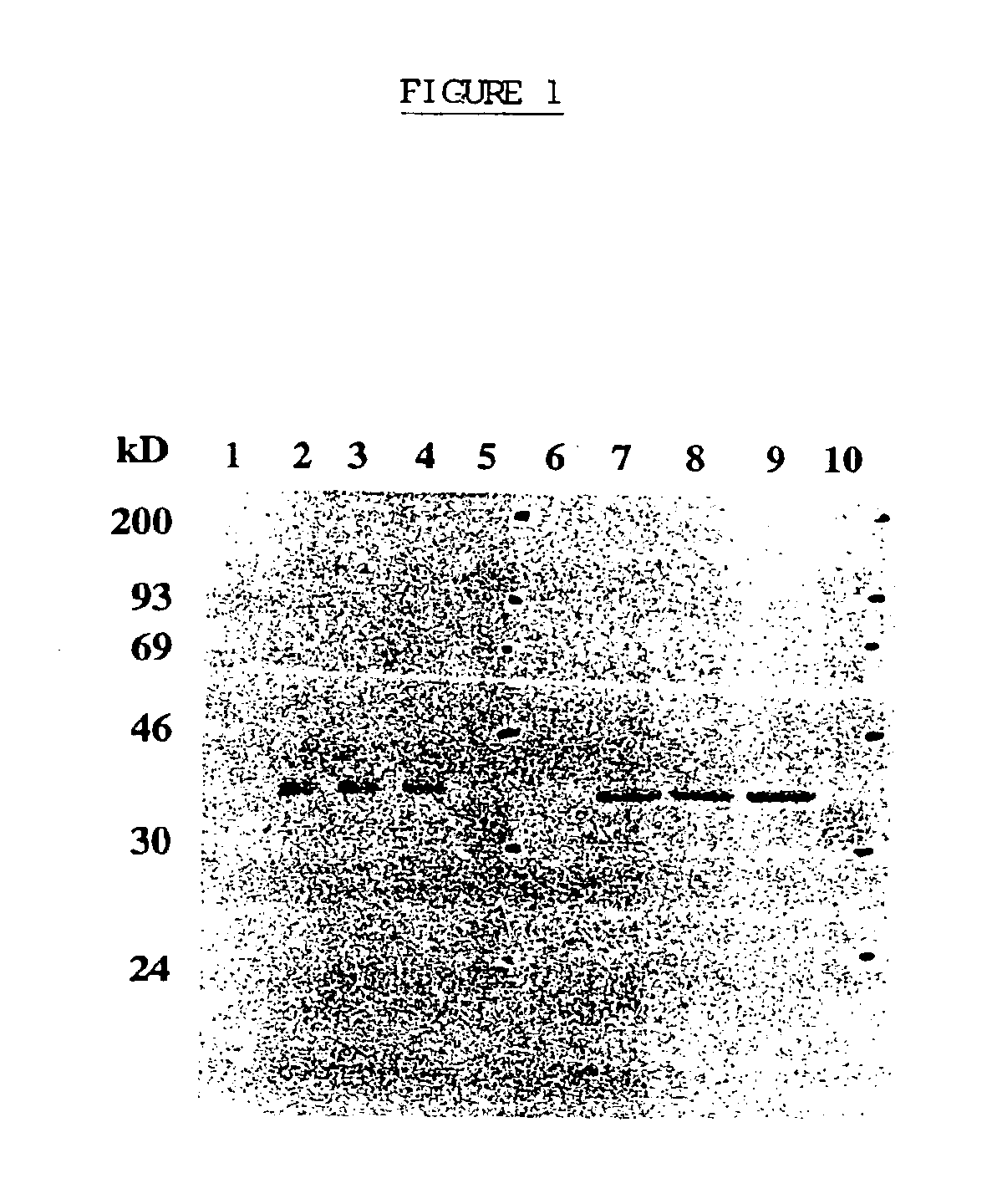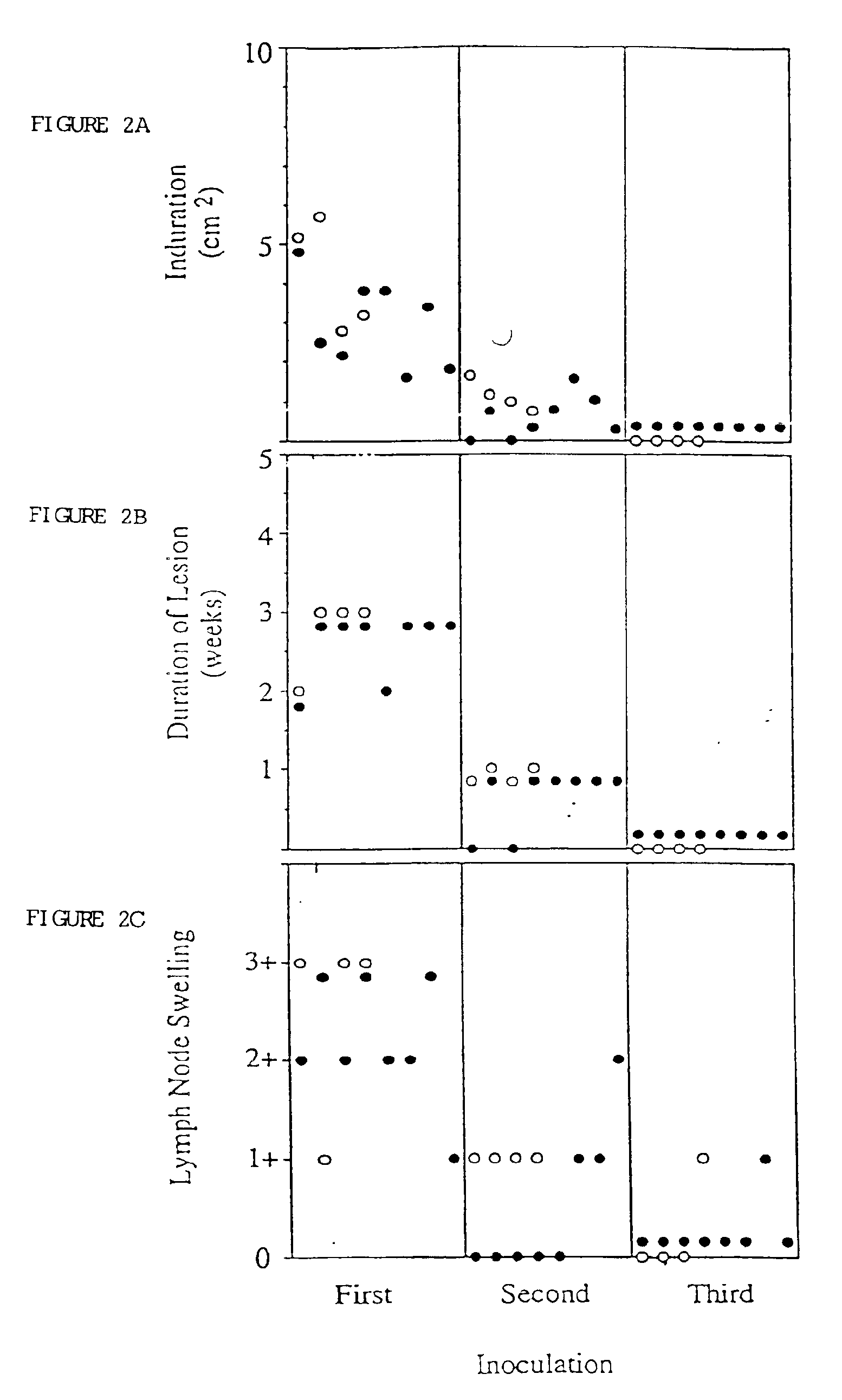Prostate specific antigen oligo-epitope peptide
a prostate specific and oligoepitope technology, applied in the field of prostate specific antigen (psa) oligoepitope peptide, can solve the problems of inability to generate an in vivo immune response, no systemic therapy has clearly improved survival in cases of hormone refractory disease, and early diagnosis is problematic, so as to achieve strong antibody response and minimize the sensitivity of the problem
- Summary
- Abstract
- Description
- Claims
- Application Information
AI Technical Summary
Benefits of technology
Problems solved by technology
Method used
Image
Examples
reference example 1
Construction of Vectors
[0088]A number of pox viruses have been developed as live viral vectors for the expression of heterologous proteins (Cepko et al, Cell 37:1053-1062 (1984); Morin et al, Proc. Natl. Acad. Sci USA 84:4626-4630 (1987); Lowe et al, Proc. Natl. Acad. Sci USA, 84:3896-3900 (1987); Panicali & Paoletti, Proc. Natl. Acad. Sci. USA, 79:4927-4931 (1982); Mackett et al, Proc. Natl. Acad. Sci. USA. 79:7415-7419 (1982)). Representative fowlpox and swinepox virus are available through the ATCC under accession numbers VR-229 and VR-363, respectively.
DNA Vectors for in vivo Recombination with a Parent Virus
[0089]Genes that code for desired carcinoma associated antigens are inserted into the genome of a pox virus in such a manner as to allow them to be expressed by that virus along with the expression of the normal complement of parent virus proteins. This can be accomplished by first constructing a DNA donor vector for in vivo recombination with a pox virus.
[0090]In...
example i
Generation of PSA Specific Immune Response
Materials and Methods
[0100]Recombinant Vaccinia Virus
[0101]A 786 bp DNA fragment encoding the entire open reading frame of human prostate specific antigen was amplified by reverse transcriptase PCR (GeneAmp RNA PCR Kit, Perkin Elmer, Norwalk, Conn.) from total RNA extracted from the human metastatic prostate adenocarcinoma cell line, LNCaP.FGC (CRL 1740, American Type Culture Collection (ATCC), Rockville, Md.). The predicted amino acid sequence derived from the PSA coding sequence was shown to be nearly identical to the published sequence (Lundwall et al, 1987), differing only in a change from asparagine to tyrosine at position 220. The PSA DNA fragment, containing the entire coding sequence for PSA, 41 nucleotides of the 5′ untranslated region, and 520 nucleotides of the 3′ untranslated region, was inserted into the Xba 1 restriction endonuclease cleavage site of the vaccinia virus transfer vector pT116. The resulting plasmid, designated pT...
example ii
Identification of Potential Prostate Specific Antigen (PSA) Specific T Cell Epitopes
[0126]Since the entire amino acid sequence of human PSA is known and human class 1 HLA A2 consensus motifs have been described, studies were undertaken to identify a series of peptides that would potentially bind class 1 A2 molecules. A2 was chosen since it is most common HLA class 1 molecule being represented in approximately 50% of North American Caucasians and 34% of African Americans. The peptide sequence of PSA was thus examined for matches to the consensus motifs for HLA A2 binding peptides. Peptides were only selected if their sequence diverged sufficiently from the PSA-related human glandular kallikrein (HGK) gene and pancreatic kallikrein antigen (PKA) sequences.
[0127]The amino acid sequence of human PSA was scanned using a predictive algorithm that combines a search for anchor residues with numerical assignments to all residues at all positions. The T2 cell binding assay was then used to de...
PUM
| Property | Measurement | Unit |
|---|---|---|
| concentration | aaaaa | aaaaa |
| volume | aaaaa | aaaaa |
| volume | aaaaa | aaaaa |
Abstract
Description
Claims
Application Information
 Login to View More
Login to View More - R&D
- Intellectual Property
- Life Sciences
- Materials
- Tech Scout
- Unparalleled Data Quality
- Higher Quality Content
- 60% Fewer Hallucinations
Browse by: Latest US Patents, China's latest patents, Technical Efficacy Thesaurus, Application Domain, Technology Topic, Popular Technical Reports.
© 2025 PatSnap. All rights reserved.Legal|Privacy policy|Modern Slavery Act Transparency Statement|Sitemap|About US| Contact US: help@patsnap.com



